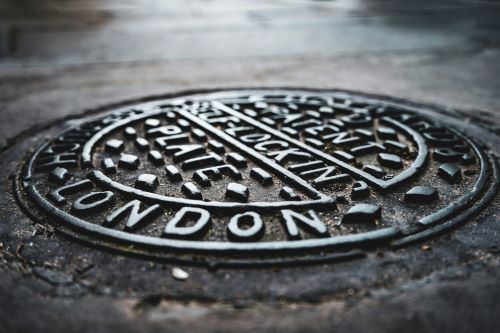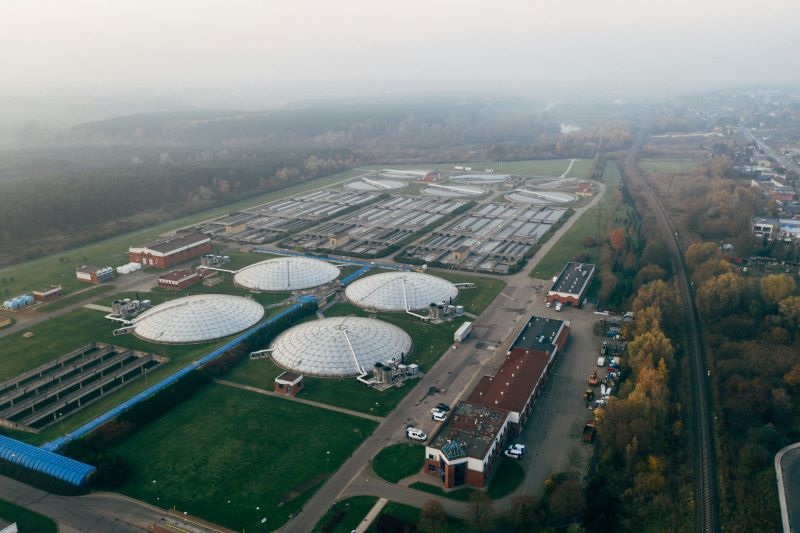.jpg?h=400&iar=0&w=1140)
You might have heard a lot about AI (artificial intelligence) in the last couple of years. It is everywhere, it is the talk of industry events, it is the subject of office discussions, and the news is full of it.
It has already become such a ubiquitous term, and promises so much, that it can sometimes be hard to imagine there is actual scientific and computer theory behind it.
Essentially, as IBM succinctly states, artificial intelligence is 'technology that enables computers and machines to simulate human intelligence and problem-solving capabilities'. So, any computer program that mimics the human brain.
The promises of AI are plentiful, but it is not a new technology. Machine learning and artificial neural networks (ANNs) have been used to 'listen' and analyse for decades. What we have now in abundance, as opposed to back in the 1990s and 2000s is faster computers and cloud-based storage and retrieval.
AI is already being used across all areas of the water sector, for example, Support Vector Machines (SVMs), used in wastewater treatment plants, which can classify and predict specific outcomes with high accuracy. The potential for future use can seem limitless.
In this feature, we will introduce some of the company's using AI in real-world applications which, by necessity, cannot be an exhaustive list.

Aquatech Online spoke to Jorge Helmbrecht, business development director at Idrica to understand more about AI and the water sector.
We asked Jorge, what the relationship is between AI and machine learning (two terms used often use interchangeably).
He said: "AI is the combination of algorithms designed to enable a machine or computer system to perform processes that are attributable to human intelligence. These processes usually include solving complex problems that do not have a simple physical or mathematical model and require language understanding and machine learning.
"Machine Learning is a form of AI that uses different techniques and algorithms such as pattern recognition of large amounts of data to draw valid conclusions and support decision making."
In terms of using AI in the water sector, Jorge told Aquatech Online that there were a wide variety of applications.
"The recognition of consumption patterns, predictions, data validation, simulation of water system behavior, anomaly detection, etc. In particular, AI opens up many possibilities by using data-driven models, not only physical or mathematical models, that are very difficult to implement if not all system variables or boundary conditions are known."
AI helps us to make faster decisions using the full power of data
And the benefits are huge. Jorge listed just a few:
"AI helps us to make faster decisions using the full power of data, for example, optimising water resource management, making more reliable predictions of hydraulic variables, detecting anomalous consumption patterns - and with them detecting and reducing leaks in distribution networks, facilitating the detection of anomalies in monitoring, improving efficiency in wastewater treatment, etc."
Idrica uses AI in several application on its platform, to facilitate an efficient and sustainable operation for water utilities:
But what does the future hold for AI and the water sector? For AI to continue to make an impact, data quality is paramount. What you put into the AI algorithm, you get out.
Jorge believes the use of AI will be extended to the processing and validation of hydrological and hydraulic data, to hydro-meteorological forecasting systems, to the detection of behavioral patterns of very complex systems such as a complete drinking water distribution network or the processes involved in the treatment of a wastewater treatment plant.
He added: "Another important challenge where AI can collaborate is in water quality or pollution issues. Finally, AI support for automatic operation recommendations will be key, as well as for easier interaction at the human-machine interface using large language models."

SewerAI uses computer visions tools to monitor and automatically detect different conditions caught on camera in sewer inspection videos. This data can be uploaded into a cloud-based AI system which can then be analysed, shared and acted upon using desktop software.
Eric Sullivan, director of business development, SewerAI, told Aquatech Online: "We currently uses AI in a descriptive way, rather than prescriptively. Our offering is a turnkey service, but we are considering customer-facing AI tools in future developments. We are also considering adding predictive AI to offer asset managers a tool that can support their planning and decision-making."
He added: "Our approach is to improve our tools through hands-on projects, which has resulted in over 30,000 miles of pipe data being stored on our platform."
There are cost and time savings in both the field and office review phases
The company's current client base is split three ways between utilities, contractors, and engineering firms.
SewerAI's technology is capable of detecting and reporting on either a single condition or a suite of them, depending on customer need. Customer results have showed improved efficiency in terms of costs and time, and compared to the traditional method, where a team would go out and make an inspection, a reduction in the potential for errors and burnout.
Eric added: "It simplifies workflow; allows operators to focus on filming the inside of the pipes and doesn't require them to be experts in assessment; there are cost and time savings in both the field and office review phases."
As always, the quality of the data used to train the AI is reflected on the accuracy of the product. At SewerAI, every image fed into the AI program is reviewed inhouse by qualified staff to ensure accuracy and consistency.

Singapore-based Teredo Analytics is using AI to help remotely monitor pipework in wastewater treatment plant in Sarawk, Malaysia. Ambient listening devices are placed in the vicinity of pipes and are trained to recognise the sounds that indicate common faults. Utility operators would normally rely on manual inspections, which can be infrequent and subjective.
The devices offer early detection of 'anomalies', through 24/7 monitoring, which alert operators via SMS alerts. This helps to eliminate costly and disruptive unplanned downtime and can reduce overall costs by allowing maintenance work to take place before a major problem occurs.
Serbian company Vodena specialises in innovative software solutions for the water and energy sectors. It is developing VodostAI to harness both AI and the Internet of Things (IoT) to help tackle flooding in the western Balkans, which in 2023 caused 300 million Euros in damage and affected more than one million people. It has been developed by a team led by Boban Stojanović, PhD, that includes experts in AI, software development, and domain specialists with multi-year expertise in hydrology and environmental science, ensuring a robust and effective solution.

A company spokesperson told Aquatech online: "As with other weather-related natural phenomena, the frequency and intensity of floods have recently increased due to the effects of climate change, such as heavy rainfall in short periods or moderate rainfall over longer periods leading to river overflows. With the development of VodostAI, Vodena aims to mitigate the adverse impacts of floods, protect communities, and ensure sustainable management of water resources."
The platform continuously monitors and updates the models using new data to ensure accuracy and relevance
Vodena automates the collection of data via integrated intelligent sensors that is processed using advanced machine learning algorithms to create predictive models. By collecting and processing hydrometeorological data Vodena can forecast water levels and issue timely warnings.
The AI component was developed using Vodena's proprietary Blackfox platform -www.blackfox.ai – which utilises deep neural networks enhanced with genetic algorithms for optimization purposes. The platform continuously monitors and updates the models using new data to ensure accuracy and relevance.
Additionally, Physics-Informed Neural Networks (PINNs) are employed to train models even with limited data by incorporating known physical laws, further enhancing the system's predictive capabilities.
A spokesperson added: "The VodostAI project is currently in the preparation phase, with plans for its real-world application to be demonstrated in the Velika Morava River basin. During this phase, data will be collected from existing monitoring systems and newly installed IoT devices to enhance data accuracy and model predictions."
They added: "The project will include the installation of number of IoT devices, strategically placed to improve monitoring and prediction capabilities. Over the next 12 months, the system's performance will be validated against historical hydrological events and existing physical models, ensuring its reliability."
These are just a few of the many companies using AI in the water sector and just a few of the applications. You can see that AI spans the entire industry. The potential for future use is vast, but success will always depend on the quality and consistency of data being fed into the algorithms. Humans will still be needed to check for accuracy, of course.
AI applications certainly lend themselves well to monitoring and detection, anywhere where patterns of normal behaviour can be mapped, data logged and analysed.